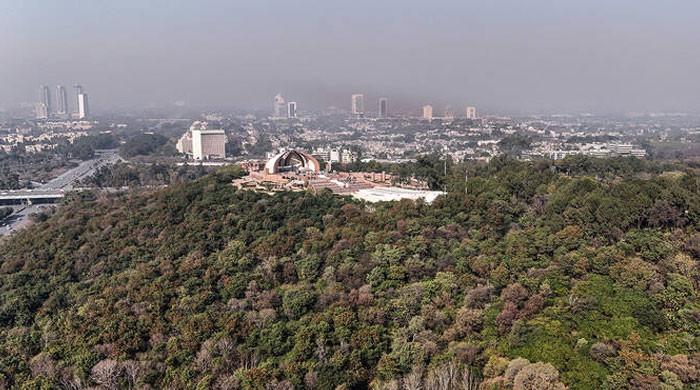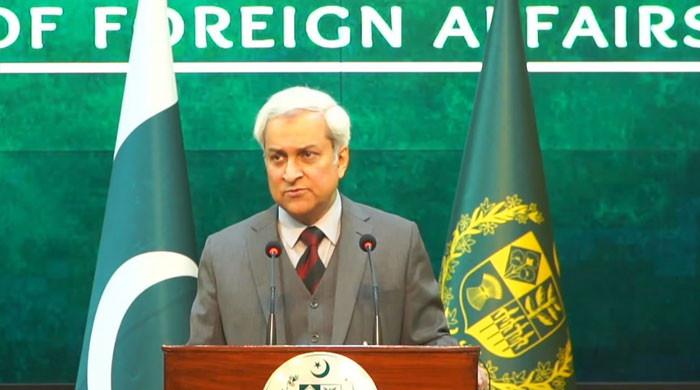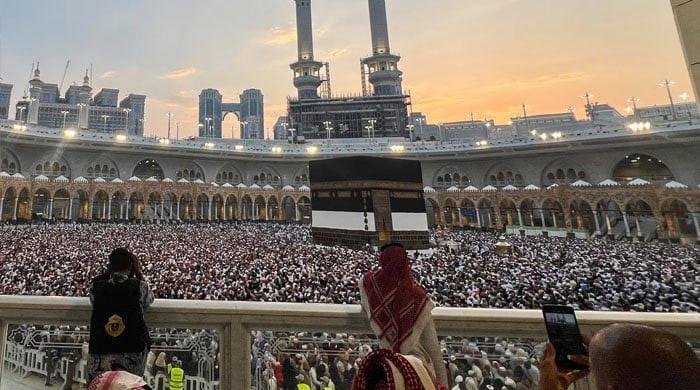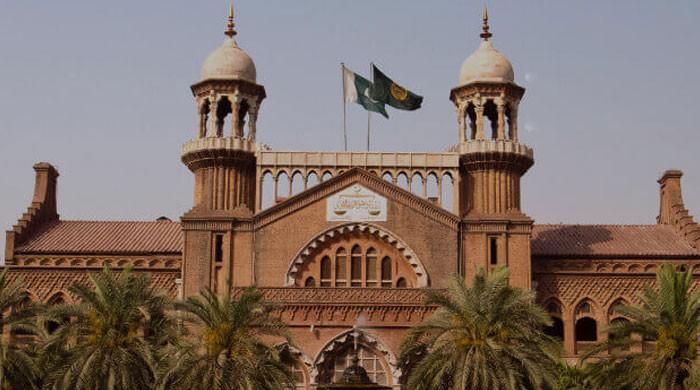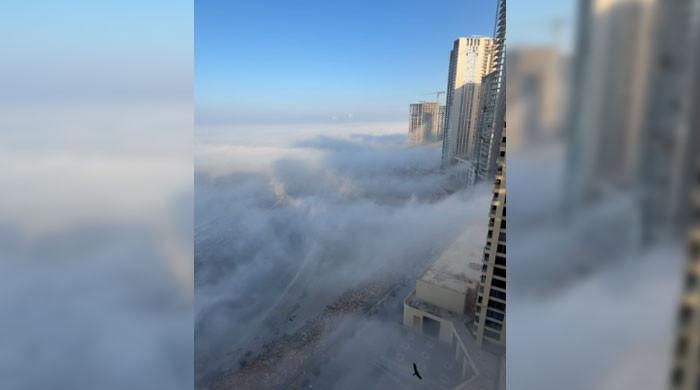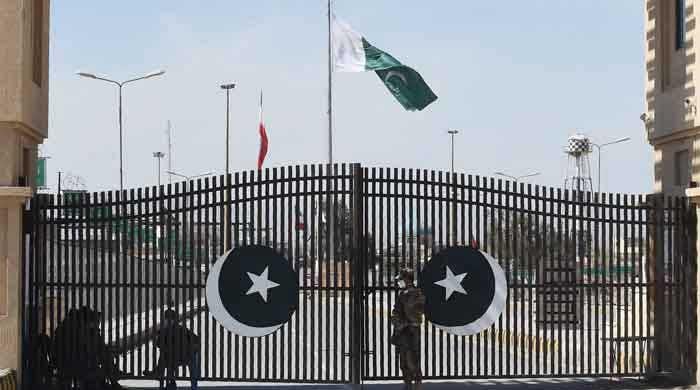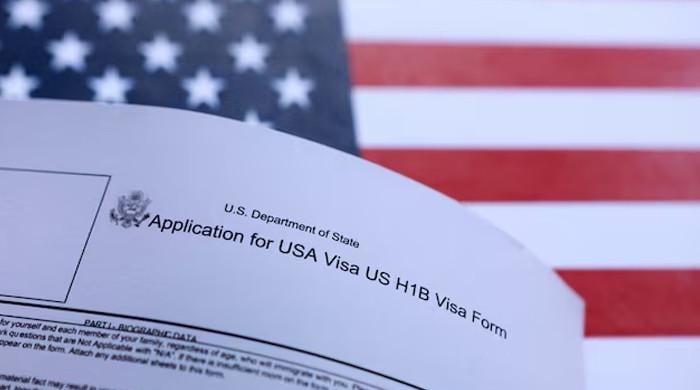Govt seeks across-the-board medical help as floods crumble health system
"[Flood-hit] people are now looking towards 2/3 of unaffected population," Ahsan Iqbal says
September 20, 2022
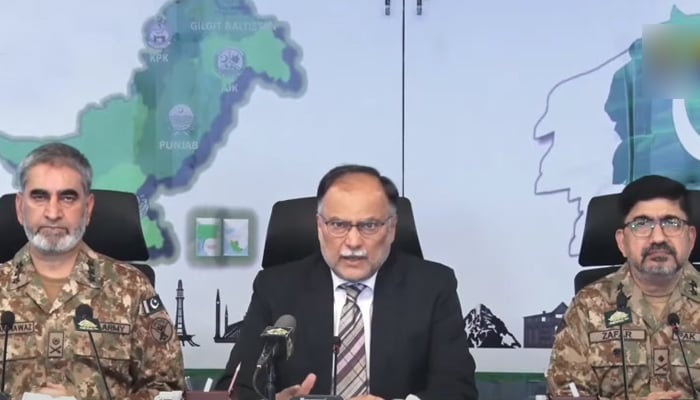
- Minister Ahsan Iqbal seeks help from across the country for flood-hit people.
- "[Flood-hit] people looking towards 2/3 population which has not been affected," says Iqbal.
- Iqbal says government has launched sister district programme as well.
ISLAMABAD: The government has sought across-the-board medical assistance as the cataclysmic floods have wreaked havoc and crumbled the country's health system, leaving people vulnerable to deadly diseases.
The death toll from the deluge has touched 1,559, including 551 children and 318 women, which does not include the deaths from the diseases contracted from the floods, the National Disaster Management Authority's (NDMA) latest report showed.
"The people [suffering from floods] are now looking towards the 2/3 of the population which has not been affected," Minister for Planning, Development, and Special Initiatives Ahsan Iqbal told a press conference alongside military officials on Tuesday.
The minister appealed to doctors to set up medical camps wherever possible for the flood-hit people and also called on the unaffected population to donate generously for rehabilitation work.
Iqbal appealed to the health sector to ensure they help the government as outbreaks of diseases were being witnessed in several areas and are expected to increase.
Record monsoon rains and glacial melt in northern Pakistan triggered the flooding that has impacted nearly 33 million people in the South Asian nation of 220 million, sweeping away homes, crops, bridges, roads and livestock in damages estimated at $30 billion.
The country received 391 mm (15.4 inches) of rain, or some 190% more than the 30-year average through July and August, a monsoon spell that started early and stretched beyond the usual timeline. Rainfall in the southern province of Sindh shot up to 466% of the average.
Sister district programme
Iqbal said that the federal government has also initiated a sister district programme, which will allow a district with enough resources to adopt a flood-hit district.
The adopter district will provide its health facilities for a month to the district that has been hit by floods — in a bid to bridge the gap in health facilities.
"The federal government is asking provinces to start this adopt a district programme. Especially in Punjab. Provinces should open the doors to their resources to help people. This will be a huge help to the country," he said.
Gathering mother-child nutrition pack
The planning minister said that the government has decided that, through the Higher Education Commission (HEC), all vice-chancellors will be directed to task their university students to make a mother and child nutrition pack.
Iqbal said that from the 2.5 million students enrolled across Pakistan's universities, the government aims to gather two million mother and child nutrition packs, for which the details will be released soon.
"We aim to raise these nutrition packs for helping the mothers and children, who are dying for food and their lives are at stake," the planning minister said.
He noted that it was an excellent opportunity for youngsters to showcase their abilities and help the flood-hit people.
Up to 60% of relief goods sent to Sindh: NDMA
For his part, NDMA Chairman Lt Gen Akhtar Nawaz said Pakistan has so far received 114 flights carrying relief goods from 20 countries.
He mentioned that Turkiye is also sending relief trains to Pakistan. He said the relief goods sent by different countries include tents, tarpaulins, blankets, food packs, medicines, and boats.
Lt Gen Nawaz said that Sindh is the most affected province, hence, 55 to 60% of relief goods have been sent to the province followed by 15-20% to Balochistan.
Relief goods have also been provided to Punjab, Khyber Pakhtunkhwa and Gilgit Baltistan, the NDMA chairman said.
He said that a complete record of relief goods is being maintained to ensure transparency.




